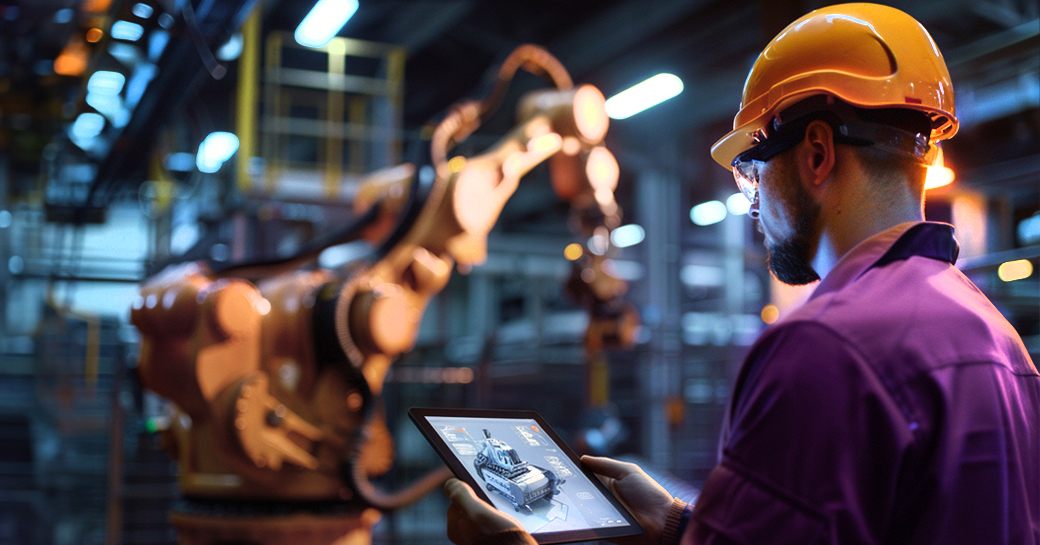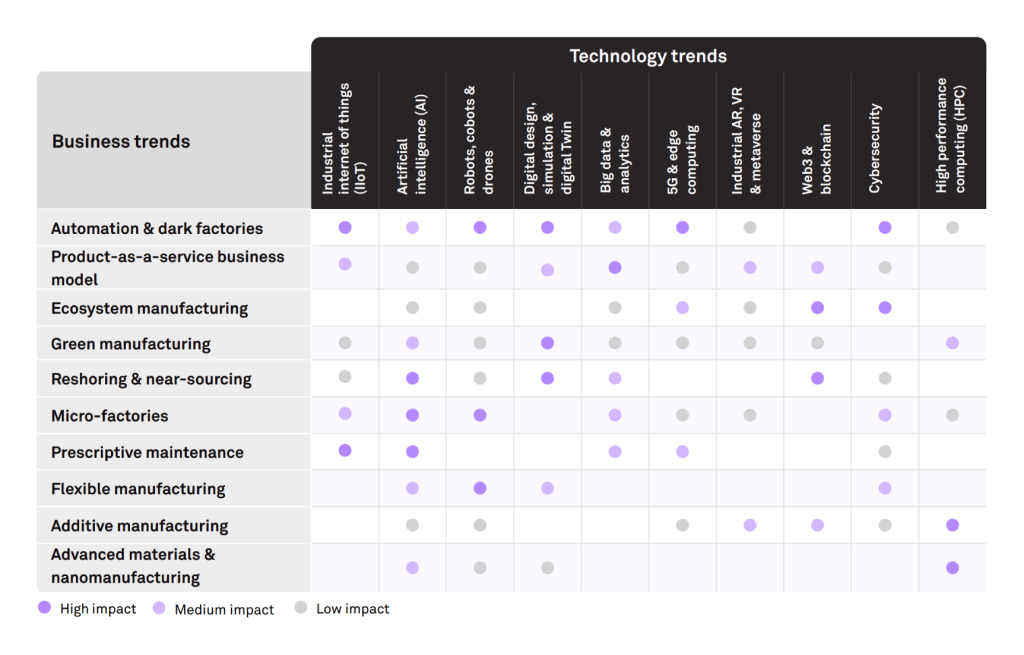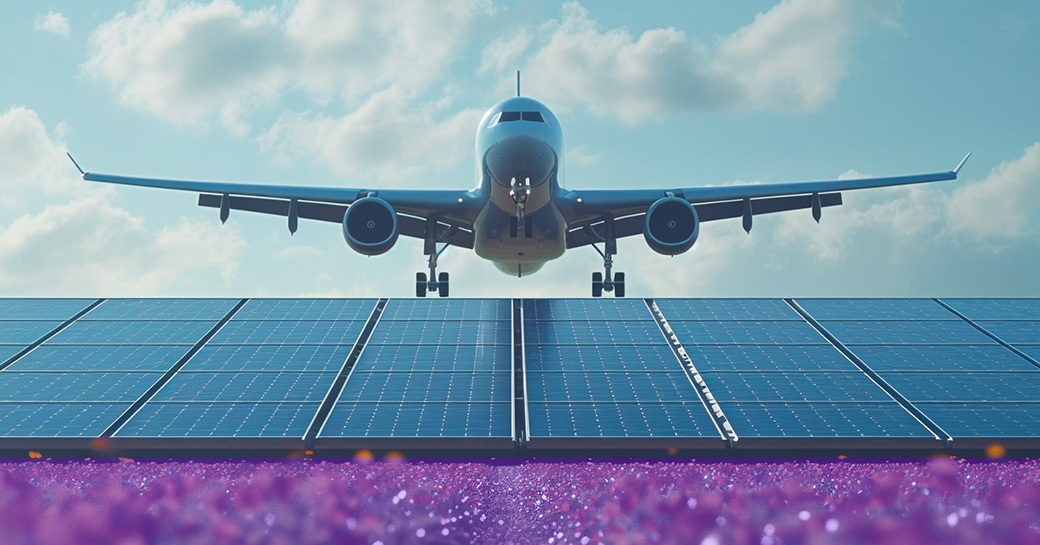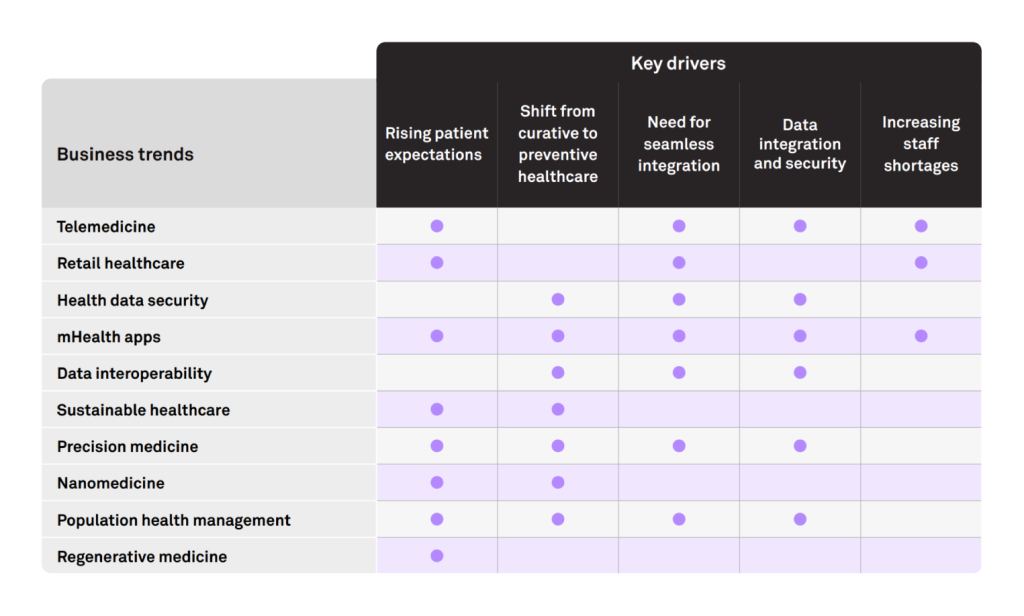Performance and choice of LLMs
Nick Brady, Microsoft
Watch Now
16:11 Minutes The average reading duration of this insightful report.

Manufacturing is becoming more smarter, efficient, precise, and sustainable by adopting IIoT, AI, Robots, Blockchain, and 5G for operations optimization. Manufacturing business trends are enabling flexible & transparent supply chains, customer-centric & agile production, ecosystem collaborations, and new business models.
Explore a sneak peek of the full content
The convergence of advanced technologies with labour, supply chain, and demand challenges is driving full automation. Nearly 84% of manufacturers have adopted or are considering smart manufacturing. Manufacturers are exploring tech-enabled ecosystem partnerships, reshoring, and factory-in-a-box model to address supply chain instability. AI, IIoT, Big Data & Analytics, Robotics, 5G & Edge Computing are enabling data collection, pattern identification, and prediction for process optimization and efficiency improvement. AI in manufacturing is expected to reach $115 billion in 2032 globally. Blockchain is ensuring supply chain and ecosystem security. Driven by regulations and environmental commitments, manufacturers are adopting technologies to reduce emissions. On-demand production, mass customization, and subscription-based products are enhancing customer experience. Download Complete Research

Credits
Lead Authors@lab45: Parag Arora
Contributing Authors@lab45: Hussain S Nayak

07:03 Minutes The average duration of a captivating reports.

The aviation industry is expanding rapidly, making it imperative to adopt sustainable practices. Airports worldwide are taking significant measures to reduce their carbon footprint, conserve natural resources and encourage social responsibility but still more needs to be done.
The aviation industry contributes to global carbon emissions, with airports accounting for about 2-3% of that contribution. While this is not very significant and airports are committing to Net-zero, they impact the environment in many other ways. Airports consume significant amounts of energy and water and generate waste equivalent to small cities and contribute significantly to noise pollution leading to health disorders in the neighbourhood. Airports also promote economic growth through trade, tourism, job opportunities, support for local businesses, and regional development and hence a sustainable balance is the need of the hour.
Airports around the world are recognizing the importance of sustainability and are implementing various eco-friendly initiatives to reduce their ecological footprint. Four key areas of focus have emerged: energy, waste, water, and noise. Some leading airports have already implemented sustainable initiatives, such as using recycled materials for construction and mandating the use of reusable tableware in food and beverage establishments. Emerging ideas include hydrogen fuel cells and bio fuels (for energy), AI and IOT Sensors for optimal water usage, hydrothermal liquefaction and AI/ML to detect recyclables for waste and AR safety programs and Noise insulation techniques for Noise impact reduction. Others need to assess their current state and take steps that best suit their situation. Download Complete Research
Credits
Author@lab45: Deepika Maurya

17:41 Minutes The average duration of a captivating reports.

Healthcare transforms with a focus on accessibility, prioritizing IT, the global market is projected at USD 975 billion by 2027. AI and machine learning, expected in 90% of US hospitals by 2025, streamline chronic condition diagnoses. Emerging technologies drive change, influencing preventive and home care in the healthcare landscape.
Healthcare IT is a top priority for providers. Nearly 80% of healthcare providers consider it one of their top 5 strategic priorities, with investments in software including revenue cycle management, security and privacy, patient intake/flow, clinical systems, and telehealth. AI, ML, and IoMT are rapidly developing and expected to be used in 90% of US hospitals by 2025. The global mHealth apps market is growing, primarily driven by the adoption of fitness and medical apps. Technology can improve patient care, reduce medical errors, and expand hospital boundaries. However, data interoperability and regulations are necessary, and patient engagement is crucial for a better healthcare system. Download Complete Research
Empowering customers through GenAI

Credits
Lead Authors@lab45: Anju James
Contributing Authors@lab45: Hussain S Nayak
This is your invitation to become an integral part of our Think Tank community. Co-create with us to bring diverse perspectives and enrich our pool of collective wisdom. Your insights could be the spark that ignites transformative conversations.
Learn MoreKey Speakers
Thank you for subscribing!!!
